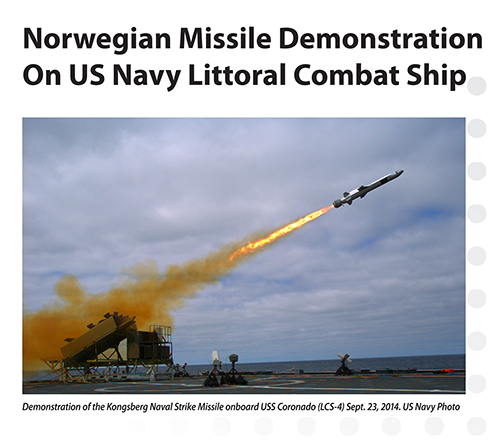Military Bulletin 3 – USN surface firepower upgrade
Since the end of the Cold War and the subsequent reduction in the Soviet Union’s own fleet, the United States Navy is without doubt the world’s largest maritime superpower. But a consequence of this, having no credible sea-denial threat, the USN has focussed on power projection from the sea rather than a more broader strategy that includes control of the sea. Vice Admiral Thomas Rowden, commander of US Naval Surface Forces, told a recent symposium, ‘It was a navy that was equally adept at sea control as it was at strike.’ This now needs to be addressed.
One way way of addressing this shortfall, at an acceptable cost, would be a further introduction of Littoral Combat Ships (LCS). The creation of small, fast, manoeuvrable, relatively inexpensive DD class type of ship, with variable roles, supported by changeable mission packages, would go some way to meet this shortfall.
.

In 2014, Independence switched from a mine to surface warfare mode in 96 hours on short notice.
“Independence (LCS 2) in drydock” by U.S. Navy Photo/Released – http://www.navy.mil/view_single.asp?id=67110. Licensed under Public Domain via Wikimedia Commons –
.
One key requirement for the LCS concept, is the need for an ‘over-the-horizon’ surface-to-surface missile.
.

The current Harpoon Block 1C missile will therefore need to be replaced, with a target date of mid-2020s. A new offensive anti-surface weapon will be required if a satisfactory strike range is to be achieved.
“Harpoon missile launch aboard USS Shiloh” by U.S. Navy photo by Mass Communication Specialist 3rd Class Kevin V. Cunningham/Released) 140915-N-UF697-087 –
.

A live fire test of the Kongsberg Naval Strike Missile (NSM) from the USS Coronado in 12014. This provided a demonstration of the potential ‘over-the-horizon’ anti ship capability that could be used by both the LCS and the evolved frigate variant.
.

The missile is completely passive and has proven to have excellent sea skimming capabilities. With its advance terminal manoeuvres, it is expected to survive current enemy air defence. The Autonomous Target Recognition (ATR) of the seeker will ensure that the correct target is detected, recognised and hit.
.
Harvey Black










